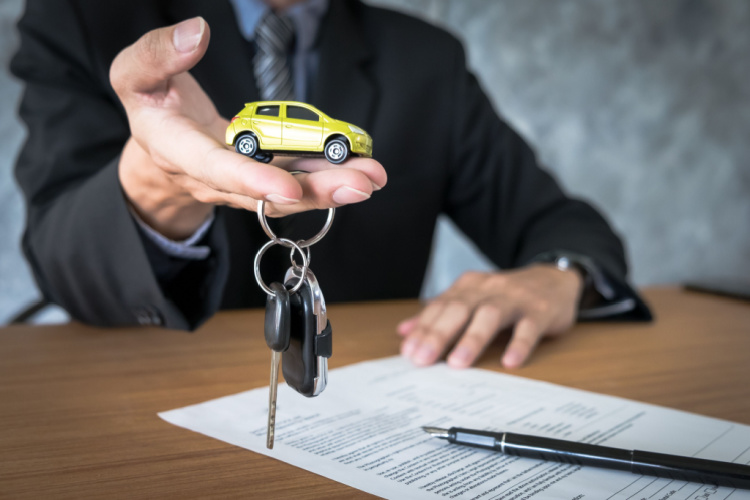All You Need To Know About Leasing A Car
Leasing sure sounds pleasing.
With a lease, you can get lower payments, lower taxes, and fewer maintenance responsibilities. All of which makes leasing a car seem pretty attractive when compared to buying a car. There’s one catch, though: The car technically wont’ be yours.
Leasing can help you get the car of your dreams, if you know what you’re getting into right from the start. Here’s a primer on what leasing a car can mean for you and your budget.

Understand What The Dealer Is Talking About
When you’re discussing leasing with a dealership, it’s important to understand the language of leasing so that you can make an informed decision.
Common leasing terms to know before signing on the dotted line include:
• Manufactured Suggested Retail Price (MSRP)
Manufacturer Suggested Retail Price (MSRP) refers to the automaker’s recommended price for a car. But keep in mind that just because the manufacturer suggests a price, you don’t have to pay it – you can negotiate on price even if you’re leasing, not buying, a car.
• Net Cap Cost
Net cap cost refers to the price of the car after you’ve negotiated down from the MSRP and applied your down payment, manufacturer discounts and rebates, your trade-in (if applicable), and any of the dealership’s necessary fees. Dealership fees can include the costs of title and registration, document and paperwork handling, and sometimes acquisition fees (what a leasing company will charge a dealership to provide the leased car).
• Depreciation
Depreciation, or a drop in value, happens as soon as a vehicle leaves a dealership lot and miles start accumulating on the odometer. With lease deals, the majority of the shopper’s payment goes toward covering this cost of depreciation.
• Residual Value
Residual value refers to the automaker’s estimate of what the vehicle will be worth when the lease term ends. In general, the lower the percentage of the vehicle’s original MSRP residual value is, the more expensive the lease payments.
• Money Factor
The money factor set by the manufacturer is specific to the vehicle’s make and model. For example, higher volume cars like the Honda Civic typically have very low money factors as compared to a Honda Pilot, which has a higher money factor. When a carmaker, not the dealership, is looking to improve sales of a particular model, it usually lowers that particular model’s money factor.

By The Numbers
When a dealership leases a car to you, it adds the cost of interest by multiplying the money factor by the car’s net capital cost plus the residual value. The interest on your lease deal is based on the negotiated price of the car as well as the car’s expected residual value. The money factor can sometimes be displayed as low as .001. To determine the equivalent annual percentage rate (APR) of your money factor, multiply it by 2400.
Here’s an example of how to calculate your leasing costs.
You’re interested in leasing a Subaru Impreza, which the dealer has priced at $26,500. You don’t have a trade-in or down payment, but you’re able to negotiate the price down to $25,000. The anticipated residual value of the Impreza after 3 years is $16,000, and the dealer is offering to lease it for 36 months with a money factor of .0023.
Based on the net cap cost minus the residual value, your lease will cover $9,000 over 36 months or $250 per month. The dealer will then calculate the lease finance fee by multiplying the money factor (.0023) by the net cap cost ($25,000) plus the residual value ($15,000), which comes out to $92 per month.
That $92.00 is added to each month’s $250 lease payment for a total of $342.00. If your state’s tax rate is 6.5%, you would pay tax on each lease payment, adding up to a monthly payment of $364.23
If you were to purchase, rather than lease, that same car, you would pay tax on the cost of the entire car. Buying the car via a 36-month car loan would result in a total monthly payment of $739.58.

At The End Of The Leasing Road
You’ll have a decision to make at the end of your lease term: you can either give the car back to the dealership or buy it. Keep in mind that if you’ve exceeded your mileage allocation or if the car has any damage other than normal wear and tear, you’ll be required to pay extra. So while you might pay more right from the beginning if you choose to buy rather than lease a car, you’ll get to keep the car for as long as you want and benefit from its equity.
If you like to drive newer cars every few years and really don’t care all that much about owning your vehicle, leasing might be your best bet. But if you prefer to hold onto a car for years and years, essentially driving it into the ground, buying might be the better option. When it comes to determining which option is best for you, you’re in the driver’s seat.
